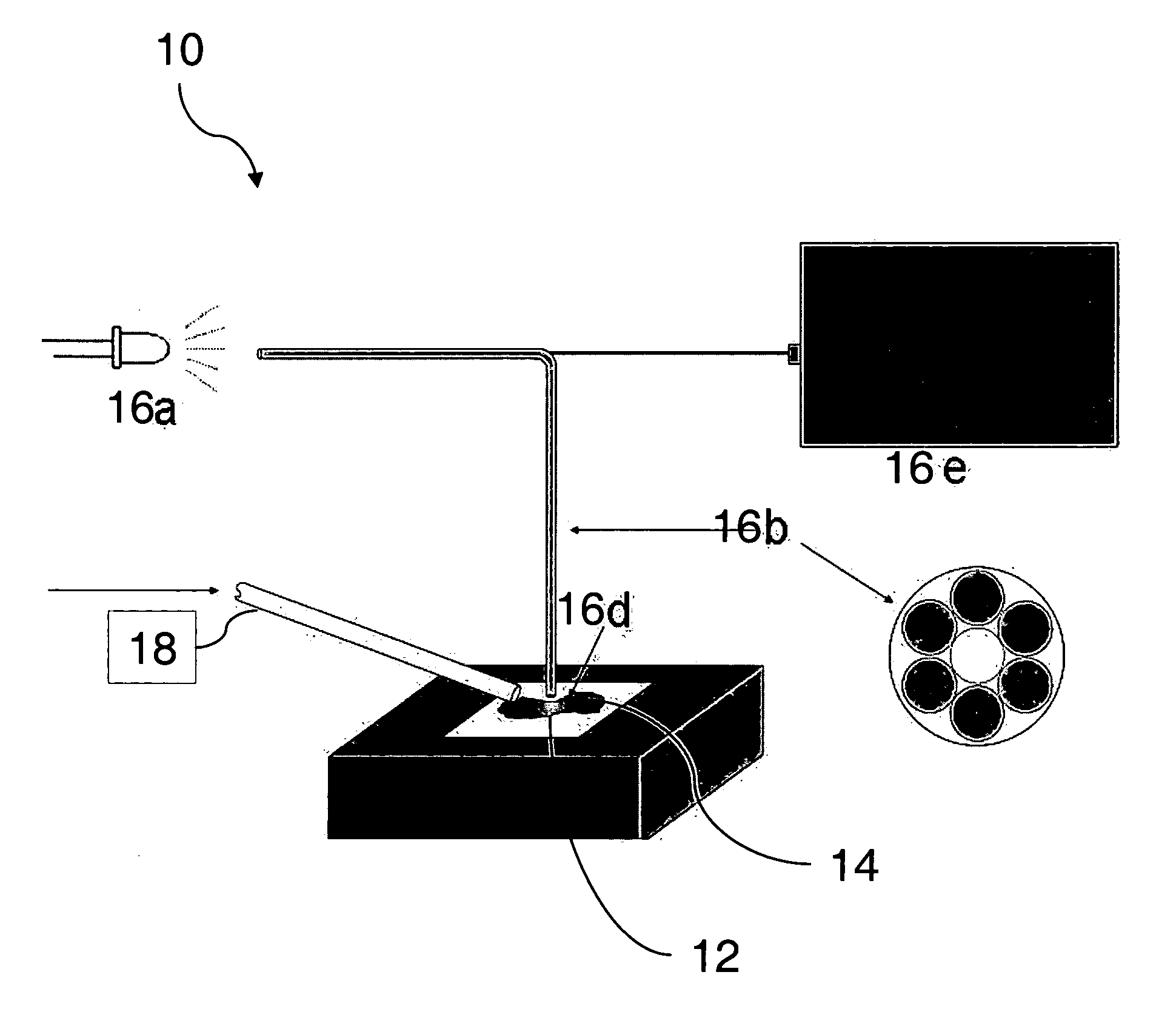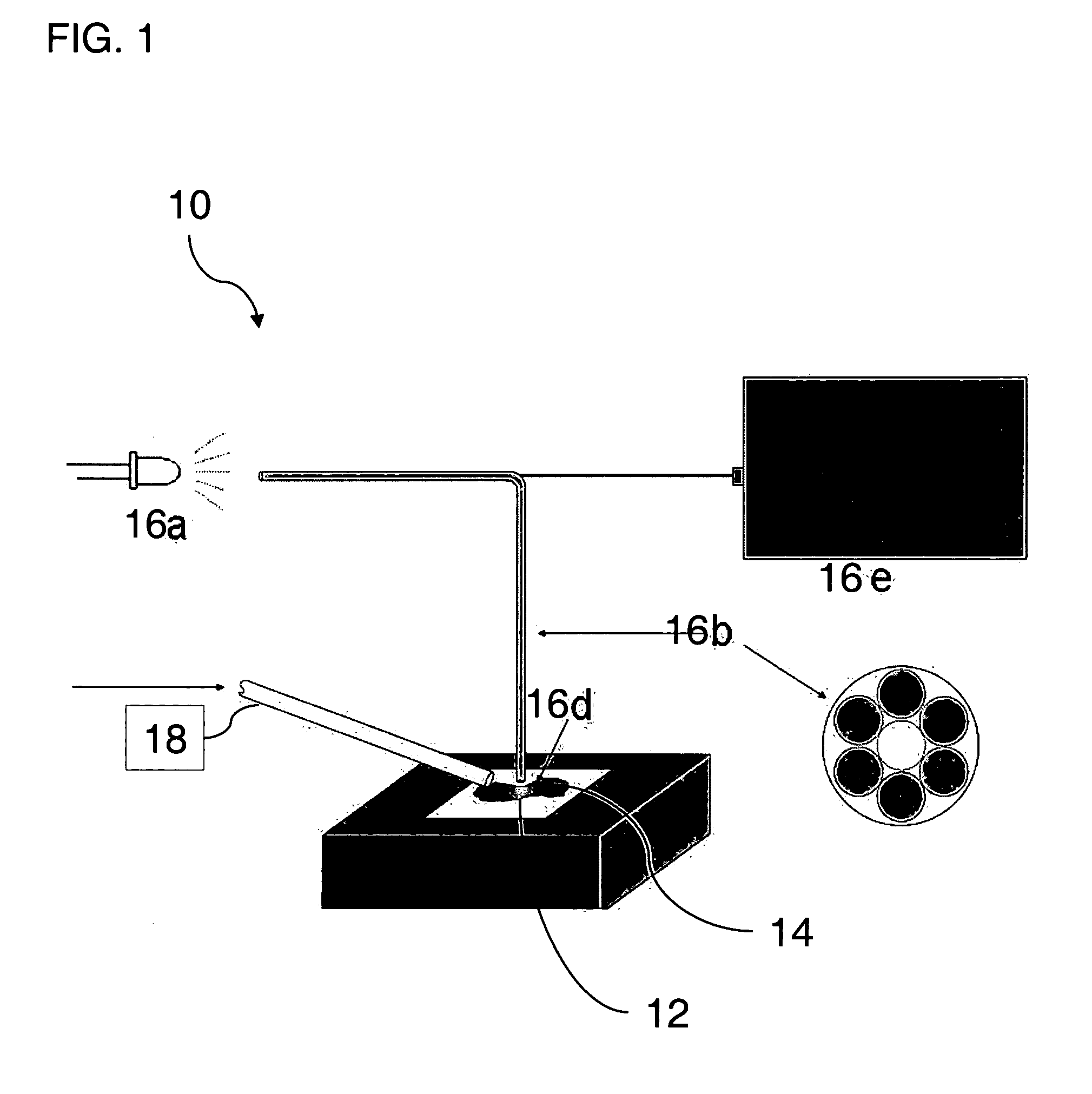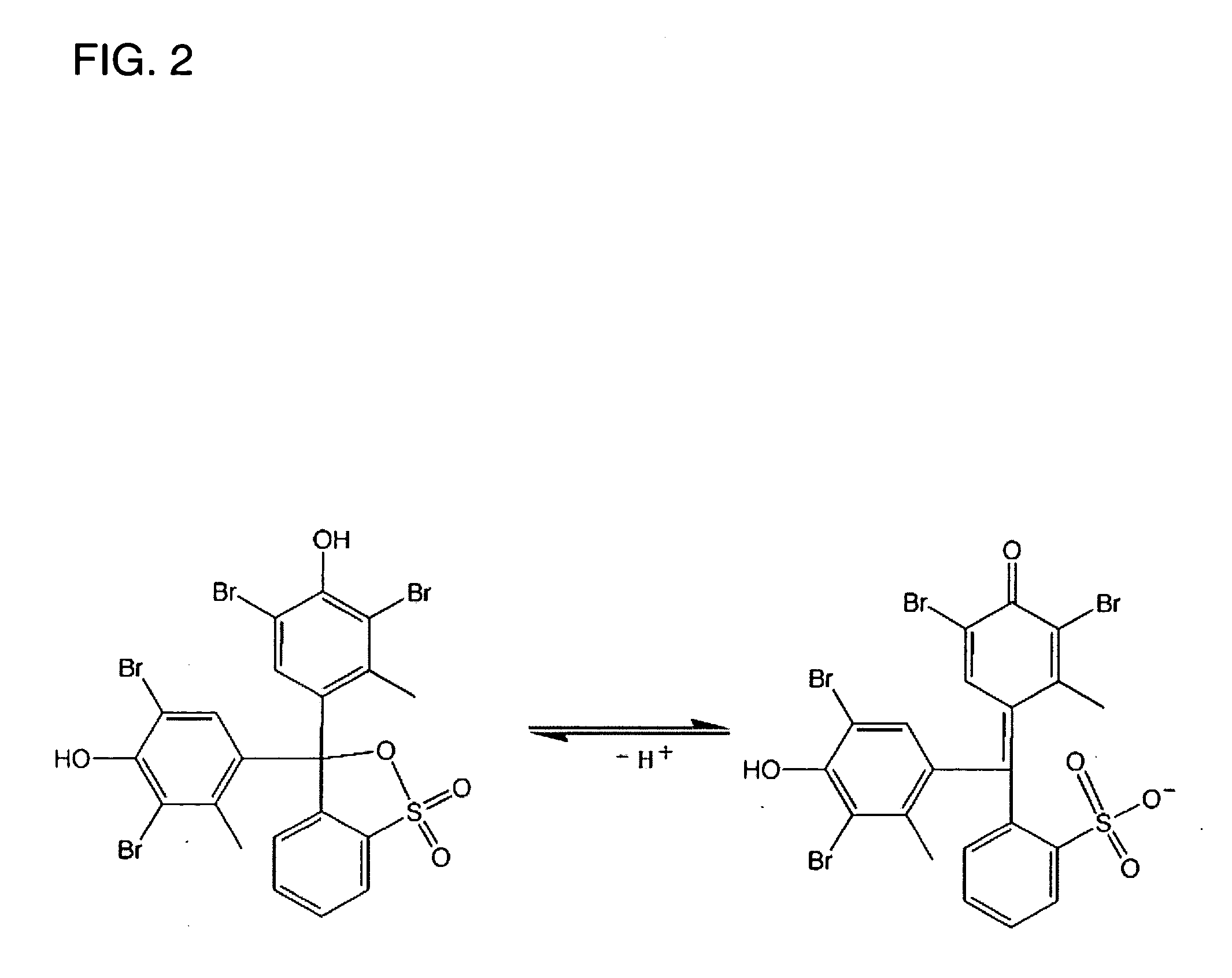Optical gas sensor based on dyed high surface area substrates
a gas sensor and substrate technology, applied in the field of optical sensors, can solve the problems of inability to detect visible light, need for reference electrodes, surface potential development,
- Summary
- Abstract
- Description
- Claims
- Application Information
AI Technical Summary
Benefits of technology
Problems solved by technology
Method used
Image
Examples
example
Amine Sensor
[0035] To demonstrate the performance of an exemplary gas sensor in accordance with the current invention, a sensor system capable of detecting amines was constructed. FIGS. 3 to 10 provide the results of a series of experiments conducted to demonstrate the sensitivity of the device to aliphatic amines, such as tert-butylamine, diethylamine and triethylamine and also for pyridine and aniline. In addition to merely detecting the presence of amines, it is also shown that sensor response varies with temperature, with lower sensitivity and faster response at higher temperatures allowing for adjustment to prioritize sensitivity or speed. And finally, that the sensor response can be made to depend on the concentration of analyte vapor. Sensor response is also shown to be highly reproducible and fully reversible allowing for the repeated use of the sensor.
[0036] The amine sensor in the exemplary embodiment used for the current invention comprised a thin multilayer of silica s...
PUM
| Property | Measurement | Unit |
|---|---|---|
| wavelength | aaaaa | aaaaa |
| diameter | aaaaa | aaaaa |
| total volume | aaaaa | aaaaa |
Abstract
Description
Claims
Application Information
 Login to View More
Login to View More - R&D
- Intellectual Property
- Life Sciences
- Materials
- Tech Scout
- Unparalleled Data Quality
- Higher Quality Content
- 60% Fewer Hallucinations
Browse by: Latest US Patents, China's latest patents, Technical Efficacy Thesaurus, Application Domain, Technology Topic, Popular Technical Reports.
© 2025 PatSnap. All rights reserved.Legal|Privacy policy|Modern Slavery Act Transparency Statement|Sitemap|About US| Contact US: help@patsnap.com



